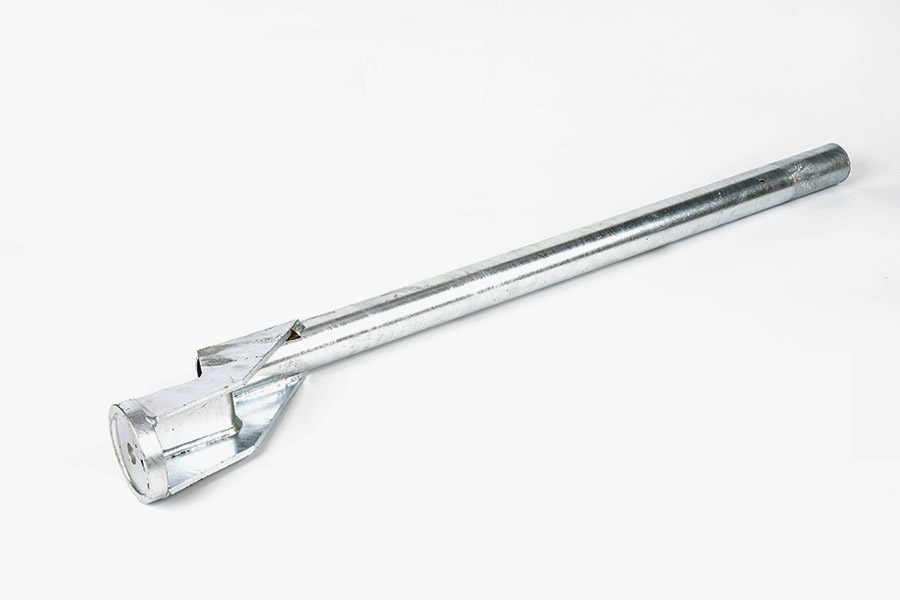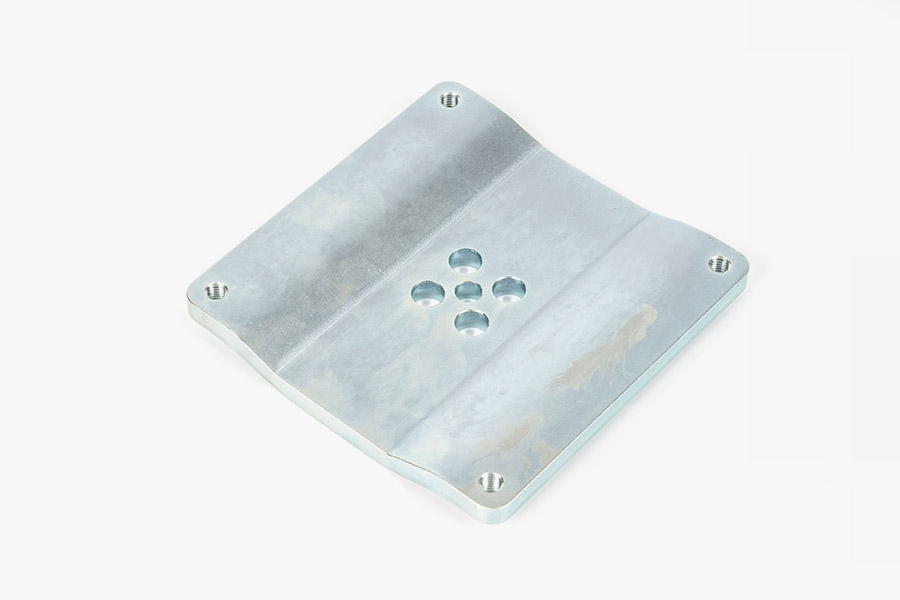Stamping metal parts: how to achieve precision manufacturing and efficient production?
 2025.08.13
2025.08.13
 Industry News
Industry News
Core advantages of stamping metal parts
High precision forming: Stamping metal parts use advanced precision mold systems, and molds manufactured through computer-aided design and precision machining technology can achieve ultra-high tolerance requirements of ± 0.01mm. This level of accuracy is equivalent to 1/7 of the diameter of a human hair, and can fully meet the extremely demanding size requirements of aerospace precision instruments, high-end electronic connectors, and other applications. The mold material is made of high-quality alloy steel and undergoes special heat treatment to ensure that the initial accuracy can be maintained even after millions of stamping processes. Combined with high rigidity stamping machines and intelligent positioning systems, each molded part can achieve almost perfect dimensional consistency, providing reliable guarantees for subsequent assembly processes.
High efficiency mass production: Modern high-speed stamping production lines integrate servo drive, automatic feeding, and intelligent detection technology, with a maximum operating speed of up to 600 stamping operations per minute. A standard production line can produce tens of thousands of pieces per day, which is 50-100 times more efficient than traditional CNC machining. The highly automated continuous mold technology enables the conversion from raw materials to finished products to be completed in a single workstation, greatly reducing the turnover time between processes. This efficient production capacity is particularly suitable for fields that require large-scale manufacturing, such as automotive parts and electronic casings. It can quickly respond to market demand fluctuations and shorten product launch cycles.
High material utilization rate: Through intelligent layout optimization using CAD/CAM software and combined with multi station progressive die design, the material utilization rate of stamping process generally reaches over 95%. Advanced nesting algorithms can arrange the layout of parts on the board like a puzzle, minimizing corner waste to the greatest extent possible. The waste recycling system can also automatically classify and collect the generated scraps, achieving almost 100% material recycling. Compared to traditional cutting processes, which typically have a material utilization rate of only 60-70%, stamping technology can save manufacturing companies 15-20% of raw material costs annually, while reducing the impact of industrial waste on the environment.
Complex structure forming: Modern stamping technology breaks through the limitations of traditional planar forming, and through multi-directional composite stamping and progressive forming processes, complex geometric features including concave convex surfaces, precision flanging, and micro punching can be completed in a single machining. The introduction of advanced processes such as hydraulic forming and hot stamping has made complex 3D modeling of high-strength steel possible. Taking the car door inner panel as an example, traditional processes require more than 10 parts to be welded and assembled, but now through precision stamping, the overall structure can be formed in one go, which not only reduces weight, but also significantly improves component strength and assembly accuracy. This integrated molding technology is redefining the design possibilities of metal components.
Comparison between Stamping Technology and Traditional Processing
| Comparison Item | Stamping Metal Parts | Traditional Machining (CNC, etc.) |
| Production Efficiency | Extremely High (Ideal for Mass Production) | Relatively Low (Suited for Small-Batch Customization) |
| Cost Control | Low Per-Unit Cost (Economies of Scale) | High Per-Unit Cost (More Labor/Material Intensive) |
| Precision Level | ±0.01mm (Dependent on Die Precision) | ±0.05mm (Affected by Tool Wear) |
| Material Compatibility | Steel, Aluminum, Copper, Stainless Steel, etc. | Metals, Plastics, Composites |
| Design Flexibility | Requires Mold (Best for Finalized Designs) | No Mold Needed (Ideal for Prototyping) |
Why choose stamped metal parts?
Cost reduction and efficiency improvement: The stamping metal parts process pushes the cost control of individual pieces to the extreme through a highly automated production mode. A set of precision molds can continuously produce millions of identical parts, resulting in an exponential decrease in single piece processing costs with increasing output. Taking car door hinges as an example, traditional CNC machining costs about 15 yuan per piece, while stamping production can control the cost within 2 yuan.This cost advantage mainly comes from three aspects: firstly, the automated production line only requires 1-2 operators to maintain 24-hour operation, reducing labor costs by 80%; Secondly, high-speed stamping (60-300 times per minute) significantly increases the output per unit time; Finally, a material utilization rate of over 95% significantly reduces raw material waste. For products with an annual demand of over 100000 pieces, the total cost of stamping process is usually 40-60% lower than machining, making it the most cost-effective choice for large-scale production.
Quality stability: The quality stability of stamping process comes from its "one-time molding" characteristic. Precision molds ensure that each part is formed under exactly the same conditions, eliminating quality fluctuations caused by tool wear, clamping errors, and other factors in traditional machining. Actual test data shows that the critical dimension CPK value of stamped parts can generally reach 1.67 or above (equivalent to 4.5 σ level), far higher than the machining value of 1.33 (4 σ level). Taking the electronic connector housing as an example, out of the 1 million products produced by stamping, the size deviation usually does not exceed 50 pieces, while the deviation rate of CNC machining is often between 300-500 pieces. This excellent consistency is particularly suitable for fields such as automobiles and medical equipment that require high interchangeability of parts, which can significantly reduce screening and rework costs on assembly lines.
Lightweight design: Modern stamping technology utilizes ultra-high strength steel (UHSS) and hot forming processes to achieve significant lightweight effects while ensuring structural strength. Taking the B-pillar of a car as an example, parts manufactured using hot stamping technology can reduce weight by 30-40% compared to traditional structures while maintaining the same collision safety performance. This lightweighting brings triple benefits: firstly, reducing material usage directly lowers manufacturing costs; Secondly, reducing the overall weight of the vehicle can improve fuel efficiency (every 10% reduction in weight can reduce fuel consumption by 6-8%); Finally, less material consumption means lower carbon emissions. The latest flexible stamping production line can now achieve mixed production of materials with different thicknesses and strengths, providing unprecedented freedom for lightweight product design and helping the manufacturing industry to transform towards green.

 Eng
Eng  中文简体
中文简体









